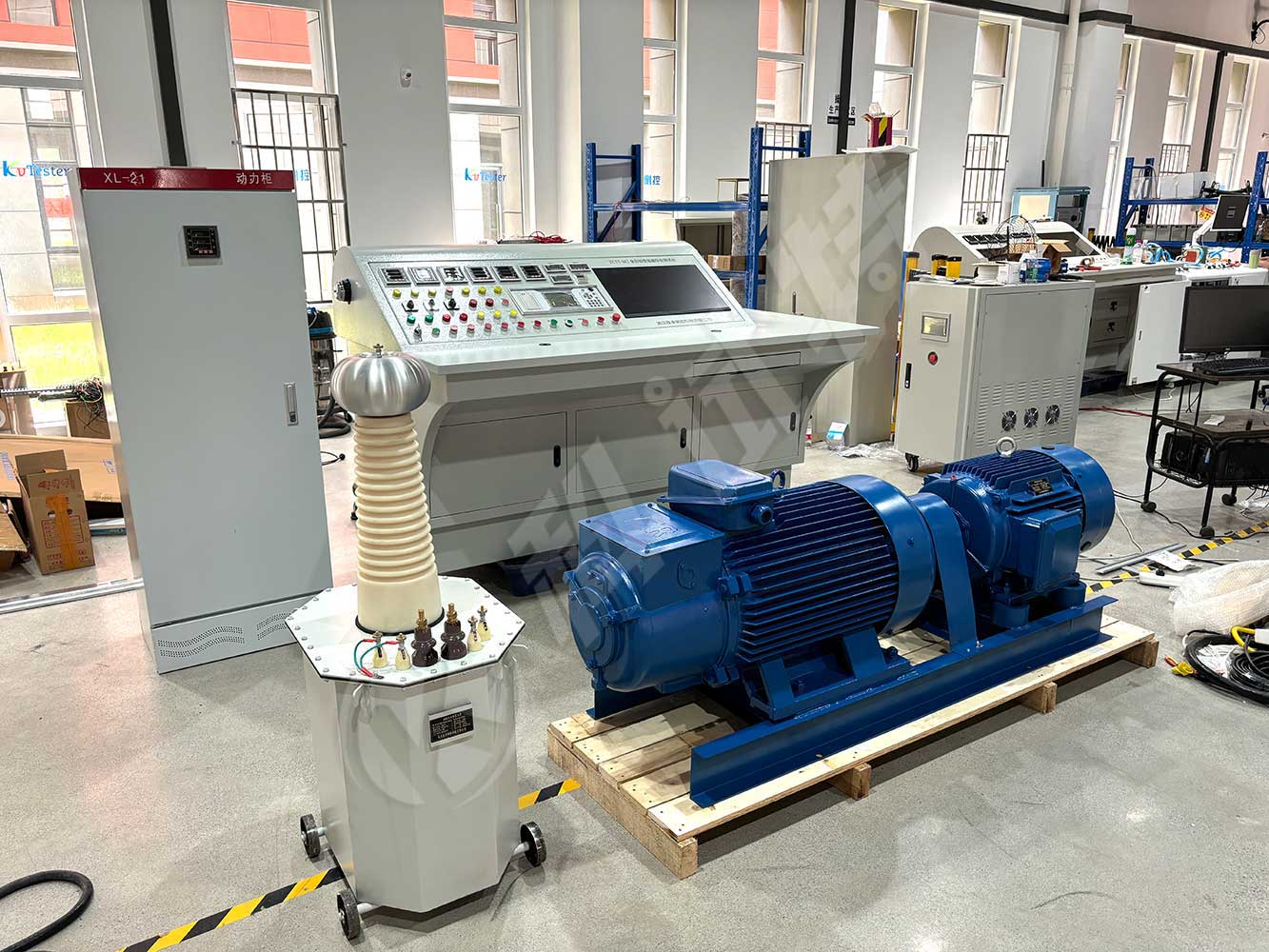The transformer comprehensive test bench may encounter various faults during use, which can be summarized into the following aspects and explained in detail with relevant numbers and information:
1. Power failure
Performance: The power supply cannot start or supply power normally.
Reason: It may be due to poor contact of the power cord, malfunction of the power socket, or problems with the power supply itself.
Solution: Check if the power cord is in good contact, if the power socket is working properly, and replace the power cord or power socket if necessary. If the problem persists, it may be necessary to check if the power supply itself is damaged.
2. Control system malfunction
Performance: The control system is not functioning properly, such as the display screen not displaying or the operation not responding.
Reason: It may be due to poor contact of the connecting wires of the control system, abnormal power supply of the control system, or system software failure.
Solution: Check if the connection wires of the control system are in good contact and if the power supply of the control system is normal. If the problem persists, try restarting the control system or checking if the system software needs to be updated or repaired.
3. Sensor malfunction
Performance: The sensor is unable to detect the parameters of the transformer properly, resulting in inaccurate test data.
Reason: It may be due to poor contact of the sensor's connecting wire, abnormal power supply of the sensor, or damage to the sensor itself.
Solution: Check if the connection wires of the sensor are in good contact and if the sensor power supply is normal. If the problem persists, the sensor may need to be replaced.
4. Communication failure
Performance: The test bench is unable to communicate with computers or other devices, resulting in the inability to transmit or read data.
Reason: It may be due to poor communication line contact, incorrect communication equipment settings, or mismatched communication protocols.
Solution: Check if the communication line is in good contact, verify if the settings of the communication equipment are correct, and ensure that the communication protocol matches. If the problem persists, try restarting the test bench and computer.
5. Mechanical failure
Performance: The mechanical components of the test bench cannot operate normally or are damaged, which affects the progress of the testing process.
Reason: It may be due to weak connection of mechanical components, poor lubrication, or damage to the components themselves.
Solution: Check if the connections of mechanical components are secure, inspect the lubrication condition, and add lubricant appropriately. If the components are damaged, the damaged mechanical parts need to be replaced.
6. Electrical malfunction
Performance: The electrical components of the test bench have short circuits or open circuits, causing the equipment to malfunction.
Reason: It may be due to weak electrical component connections, abnormal power supply, or component aging and damage.
Solution: Check if the electrical components are securely connected and if the power supply is functioning properly. If electrical components are damaged, they need to be replaced.
7. Testing error issues
Performance: The test results are inaccurate and contain errors.
Reason: It may be due to fluctuations in power supply voltage, sensor errors, instrument accuracy issues, or improper operation.
Solution: Use a stable power supply or power regulator to calibrate or inspect sensors, select high-quality and high-precision testing instruments, and carefully set and calibrate test parameters before testing to ensure the correct testing sequence and avoid operational errors.
8. Specific testing questions
Abnormal input/output voltage: Check the stability of the input/output voltage, adjust the voltage or replace the voltage regulator.
High temperature: Clean the radiator to ensure good heat dissipation inside the transformer.
Insufficient insulation resistance: Replace the insulation material or perform drying treatment.
Excessive noise: Check the internal components of the transformer, repair loose or replace damaged parts.
The above are some common faults that the transformer comprehensive test bench may encounter and their solutions. In practical use, troubleshooting and handling should be carried out according to specific situations to ensure the normal operation of the test bench and the accuracy of the test results.
 、
、
The ZC-200 Transformer Comprehensive Testing System is mainly used to test the no-load characteristics, load characteristics, winding resistance, transformation ratio group, power frequency withstand voltage, induction withstand voltage, and insulation resistance of power transformers and distribution transformers. The system adopts a modular design, and each testing unit can work independently and perform automatic testing under computer control. The test data for each project can be directly obtained through a computer and can form a test report. This system avoids random errors caused by manual observation and data recording, greatly improving experimental efficiency.
Kvtester Electronics Technology Co.,Ltd. is a high-tech enterprise specializing in power testing, testing, research and development, production, and sales of testing equipment. It has been engaged in the electrical testing industry for many years, and its products are of high quality. We welcome customers to come and purchase. Service hotline: 0086-27-81778799, to learn more, visit the official website: www.kvtester.com





